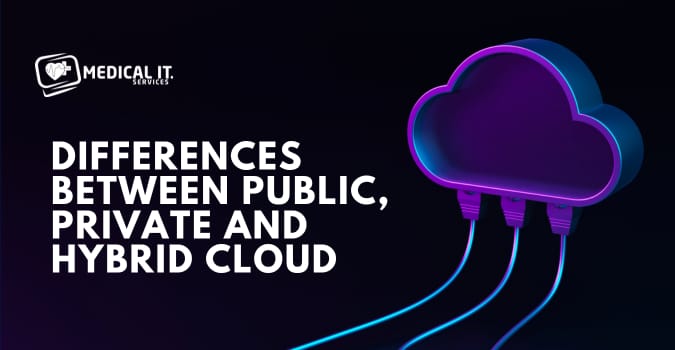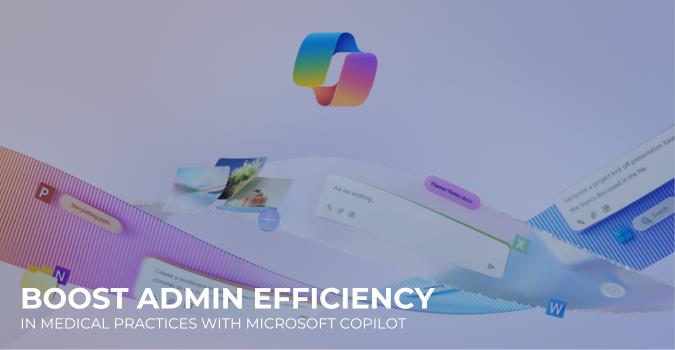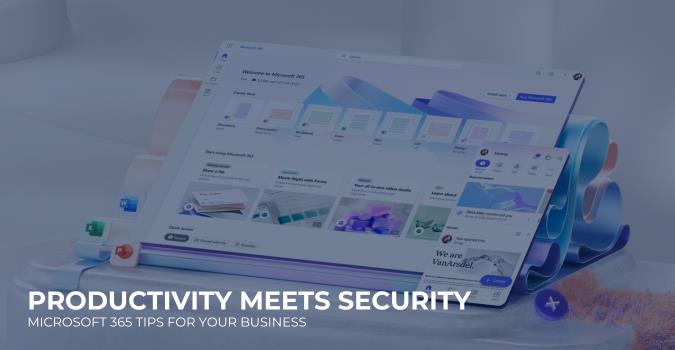While most clinics are busy managing patient flow, compliance, and billing, there’s a silent threat…

Differences Between Public, Private and Hybrid Cloud
Cloud computing has become an essential part of the modern technology landscape, offering a wide range of solutions for businesses and individuals. Understanding the differences between Public, Private, and Hybrid Cloud is crucial for making informed decisions about the right cloud solution for your organisation. In this article, we will explore the crucial differences between hybrid, private, and public clouds. These three cloud deployment models provide distinct benefits and challenges, making it vital for organizations to choose the right one for their specific needs.
Cloud Computing Fundamentals
Before we dive into the differences, let’s establish some foundational knowledge about cloud computing. Cloud computing is a technology that enables users to access and manage computing resources, such as servers, storage, databases, networking, software, and analytics, over the internet. This technology offers three primary service models:
Infrastructure as a Service (IaaS)
This model provides basic computing resources, such as servers, storage, and networking, to users on demand over the Internet. IaaS allows organizations to avoid the upfront costs of purchasing and maintaining their own IT infrastructure.
Platform as a Service (PaaS)
This model provides a platform for developers to develop, deploy, and manage applications without having to worry about the underlying infrastructure. PaaS provides a complete development and deployment environment, including the operating system, programming language runtime, database, and web server.
Software as a Service (SaaS)
SaaS is also known as on-demand software, web-based software, or web-hosted software. It is considered to be part of cloud computing, along with several other as a service business models. SaaS apps are typically accessed by users of a web browser (a thin client).
1.Public Cloud
Public cloud is the most common cloud deployment model, offering a shared pool of resources provided by cloud service providers. Here are some key characteristics of public clouds:
1.1. Cost-Efficiency
Public clouds are typically cost-effective, as organizations pay only for the resources they use. This makes them an attractive choice for startups and small to medium-sized businesses with limited budgets.
1.2. Scalability
Public clouds can easily scale resources up or down based on demand, making them well-suited for applications with fluctuating workloads.
1.3. Global Reach
Public cloud providers operate data centers in multiple regions, providing a global reach for applications and services. This is advantageous for businesses with an international customer base.
2.Private Cloud
A private cloud is a cloud infrastructure exclusively dedicated to a single organization. It offers several advantages, including:
2.1. Enhanced Security and Privacy
Private clouds are ideal for organizations that prioritize data security and privacy. They allow complete control over the infrastructure, reducing the risk of unauthorized access and data breaches.
2.2. Customization
Private clouds can be tailored to meet the specific requirements of an organization. This means that businesses can create an environment that perfectly aligns with their applications, workloads, and compliance needs.
2.3. Predictable Performance
Private clouds provide predictable and consistent performance since they are not shared with other organizations. This makes them suitable for applications that demand stable and reliable resources.
3.Hybrid Cloud
A hybrid cloud is a cloud deployment model that combines elements of both private and public clouds, creating a flexible and scalable infrastructure. The key features of a hybrid cloud are:
3.1. Combination of On-Premises and Off-Premises Resources
In a hybrid cloud, organisations can leverage their on-premises infrastructure alongside resources provided by a public cloud service provider. This enables businesses to retain control over sensitive data and applications while taking advantage of the scalability and cost-effectiveness of the public cloud.
3.2. Flexibility
Hybrid clouds offer the flexibility to move workloads between on-premises and public cloud environments. This flexibility allows businesses to optimize resource usage, accommodate fluctuating workloads, and meet specific compliance requirements.
3.3. Security and Compliance
Organizations in industries with stringent compliance requirements, such as healthcare and finance, often prefer hybrid clouds. This is because they can maintain sensitive data on private infrastructure while utilizing public cloud resources for less critical workloads.
Making the Right Choice
In summary, the choice between Hybrid Cloud, Private Cloud, and Public Cloud depends on an organization’s specific needs, data security requirements, scalability demands, and budget considerations. Many organizations may opt for a combination of these models, such as a Hybrid Cloud, to leverage the advantages of each for different aspects of their operations.
Harnessing Cloud Technology for Advancing Healthcare Innovation
To learn more about implementing a public, private, or hybrid cloud solution that suits your healthcare IT needs, contact MedicalIT.Services. Our fully managed cloud services allow registered users to get access to our data centers in Australia. Whether you need a cloud email service or a personal cloud solution, find out how we cover them all.
Also Read:
Tips to Ensure Healthcare Data Security in Cloud Environment



